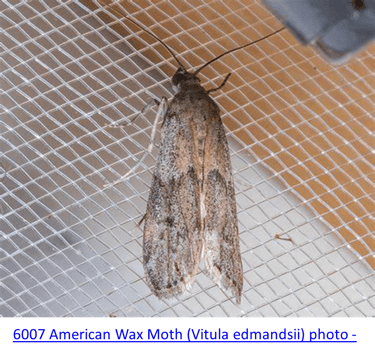Hive Beetles and Wax Moths: Two Common Pests of Bee Colonies
Introduction
Beekeeping is a rewarding hobby and a profitable business for many people around the world. However, beekeepers face many challenges and threats to their colonies, such as diseases, parasites, predators, and pests. In this article, we will focus on two common pests that can infest bee colonies and cause damage to the honeycombs and the bees: hive beetles and wax moths.
Hive Beetles
Hive beetles are small, dark brown or black beetles that belong to the family Nitidulidae. They are native to sub-Saharan Africa, but have spread to other regions, such as North America, Europe, Australia, and Asia. Hive beetles feed on pollen, honey, wax, and bee brood (larvae and pupae). They can also carry diseases and fungi that can infect the bees and the honey.
Hive beetles can enter the hive through small gaps or cracks or hitch a ride on foraging bees. They prefer warm and humid conditions and can multiply rapidly if left unchecked. They can cause damage to the honeycombs by tunneling through them and leaving behind feces and slime. This can spoil the honey and make it unfit for human consumption. Hive beetles can also cause the bees to abandon the hive, a phenomenon known as absconding.
Beekeepers can prevent and control hive beetle infestations by using various methods, such as:
Maintaining strong and healthy colonies that can defend themselves against the beetles.
Reducing the entrance size of the hive and sealing any cracks or holes that can allow the beetles to enter.
Keeping the hive area clean and free of debris, such as dead bees, wax capping's, or honey spills, that can attract the beetles.
Using traps or baits to capture or kill the beetles inside or outside the hive.
Freezing or irradiating the honeycombs or frames that are infested with beetles or their larvae.




Wax Moths
Wax moths are moths that belong to the family Pyralidae. They are also known as waxworms, which is the name of their larval stage. Wax moths are found worldwide, and can infest both wild and domesticated bee colonies. Wax moths feed on wax, pollen, honey, and bee brood. They can also damage the wooden parts of the hive by chewing through them.
Wax moths can enter the hive through small openings or by flying in at night. They prefer dark and cool conditions, and can survive in empty or weak hives. They can cause damage to the honeycombs by spinning cocoons and webs that can disfigure and destroy the comb structure. This can reduce the storage space and the brood area for the bees. Wax moths can also weaken the bees by transmitting diseases and parasites.
Beekeepers can prevent and control wax moth infestations by using various methods, such as:
Maintaining strong and healthy colonies that can remove or repel the moths and their larvae.
Reducing the number of empty or unused frames or boxes in the hive that can provide shelter for the moths.
Keeping equipment storage area well-lit and ventilated to discourage the moths from entering or staying.
Using traps or baits to capture or kill the moths inside or outside the hive.
Freezing or irradiating the honeycombs or frames that are infested with moths or their larvae.
Conclusion
Hive beetles and wax moths are two common pests that can infest bee colonies and cause damage to the honeycombs and the bees. Beekeepers can prevent and control these pests by using various methods, such as maintaining strong and healthy colonies, keeping the hive area clean and secure, and using traps and/or baits. By doing so, beekeepers can protect their colonies and their products from these pests.
At Magnolia Bee & Supply you can find beetle traps along with controls for storing foundations that mitigate against wax moths.
Get in touch
Address
1010 Magnolia Bvld Suite K
Magnolia Tx, 77355
www.magnoliabeeandsupply.com
Magnolia, Texas 77355
Contacts
281-305-4072
info@magnoliabeeandsupply.com
magnoliabeeandsupply@gmail.com
Provide your email address below to stay informed of specials offers, other beekeeping related information
